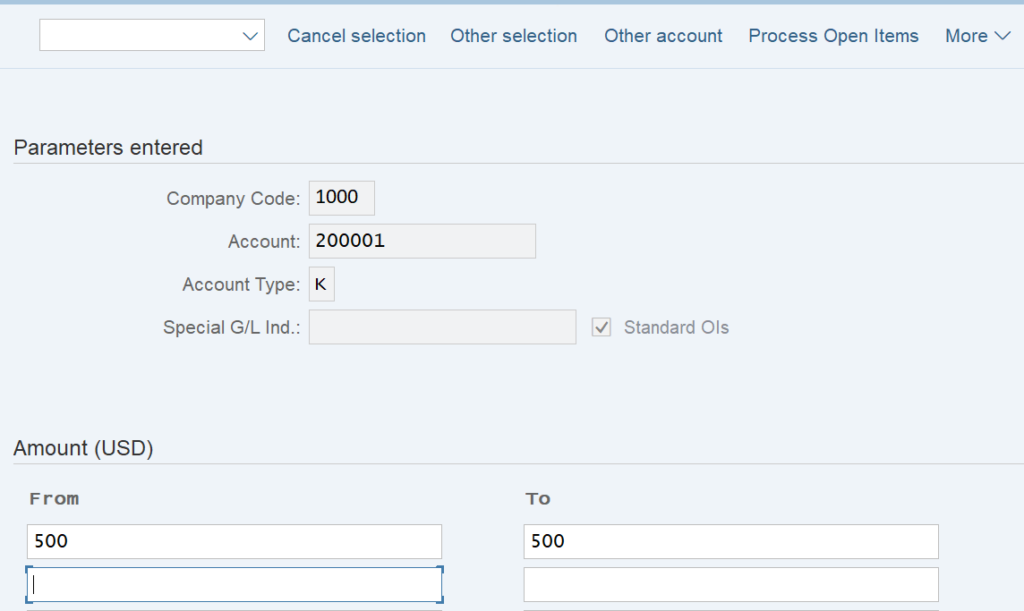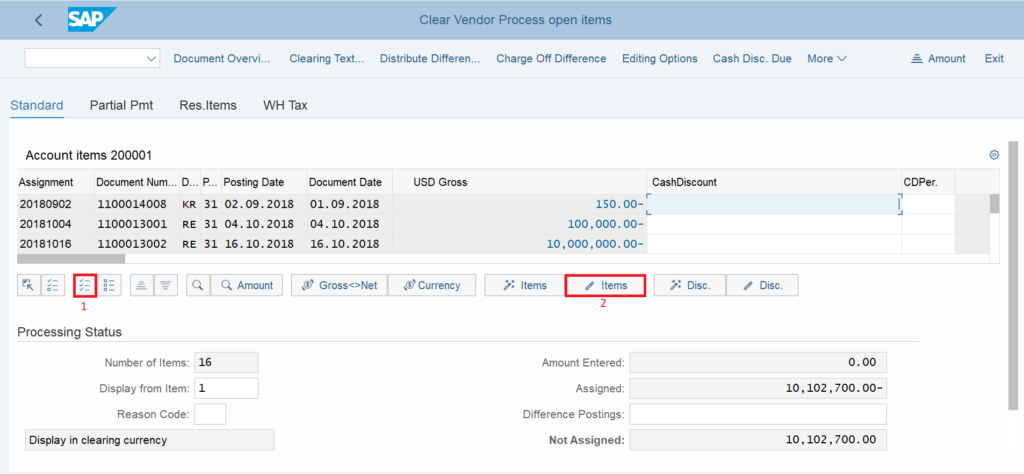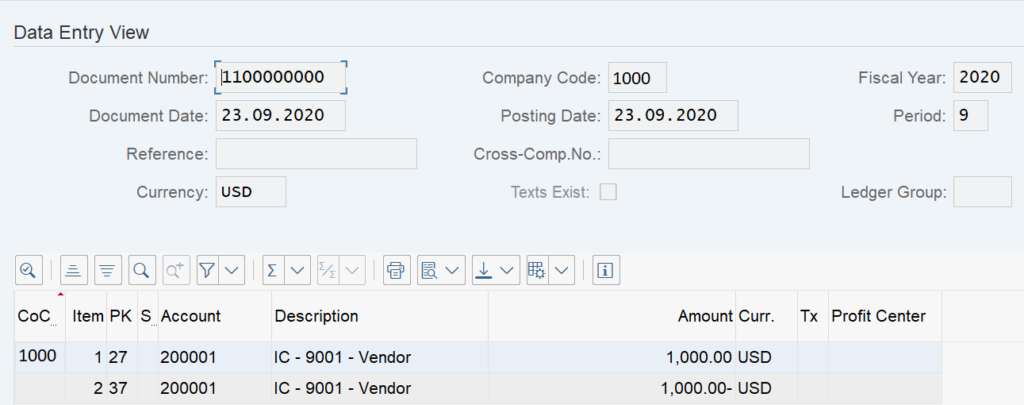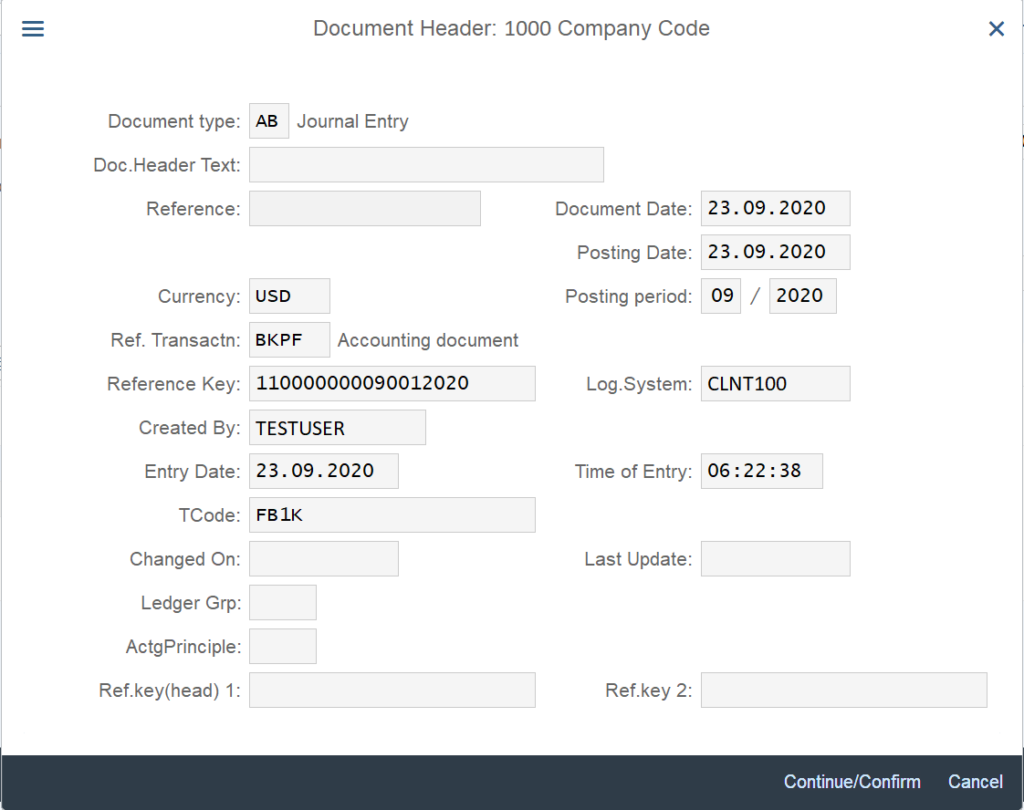F-44 in SAP: Clear Vendor Open Items
Hi All, I hope you are doing good and staying safe!! If you have gone through my previous posts, you would be aware that a vendor invoice can be automatically cleared when you execute a vendor payment via tcode F-53 or F110 (Automatic Payment Program) in SAP. You can also use tcode F-44 in SAP to clear the vendor open items.
But why do you need to execute this tcode? Sometimes what happens is that you make on-account payment to a vendor. An on-account payment is a payment that is not made against any open invoice. So, once an on-account payment is made, it is not adjusted against any particular invoice. Rather, it is posted to a vendor account as an open-item payment document. To clear such payments, you need to use F-44 in SAP.
Another example would be the vendor debit memos. You generate debit memos for vendors to process some adjustments. These adjustments could be related to discounts, faulty material, etc. You create these debit memos as an open item adjustment to a vendor account. Here, again you should use the tcode F-44 in SAP to clear the vendor open items by knocking it off against an open invoice.
In this tutorial, I will be demonstrating how you can use F-44 to clear the vendor open items. So, without further ado, let’s begin!
Table of Contents
F-44 in SAP: Selection Screen
Before you execute the tcode F-44 in SAP, please make sure that you have postings for either an on-account payment or a valid vendor debit memo for a particular vendor. Once you have these documents in the SAP system, you can execute F-44.

In the initial screen, you need to enter the vendor code for which you want to clear the open items, the company code, clearing date (the date on which the clearing document will be processed), and currency. The system will take the posting period automatically from the clearing date.

On the same initial screen, you will find a lot of additional selections that you can use. If you want to clear any Special GL Indicator transactions, then you need to provide the Special GL Indicator. Otherwise, it should be kept blank.
In the additional selections, you can use parameters like Amount, Posting Date, Reference Number, Document Type, etc.

If you select the Amount option from the additional selections, then you can enter the amount that you want to clear. For example, if you enter the amount as 500 USD, then the system will only show the vendor open items with the same amount.

After you enter the amount as 500 USD in the selection screen, click on the ‘Process Open Items’ button at the top to display all the vendor open items having the same amount. Afterward, you can clear these open items.

F-44 in SAP: Process Open Items
If you choose the NONE option instead of the AMOUNT, then the system will display all the open items for the same vendor.

Here, you can see that the system is displaying all the 16 open items for this vendor. By default, the system will automatically activate all the open items for clearing. In case, you want to clear specific open items, then you need to deactivate all the open items first. To do that, click on the SELECT ALL button first and then click on the DEACTIVATE ITEMS to deactivate all the open items.

Once all the open items have been deactivated, you need to activate the only those open items that you want to clear. You can select multiple credit line items as well. For example, I have selected the open vendor invoice for $1000.

Now, you need to select the other open items with the opposite posting indicators. You can select multiple debit line items for clearing. Please make sure that the total of the other open items should not exceed $1000. I have selected a vendor debit memo of $1000.

After selecting all the open items, you can see the processing status in the same screen. When the debit amount is equal to the credit amount for the selected open items, the amount entered and assigned will become zero. In other words, if you see these fields having a zero amount, you can proceed further to clear it. Click on the post button to clear both the entries.

After you click on the Post button, the system will post a clearing accounting document. This accounting document will have the details of the vendor code and the clearing amounts.
Display the Clearing Document

To display the clearing accounting document, you can open transaction FB03 and enter the clearing document number, company code, and fiscal year. In FB03, you will be able to see the clearing document with the vendor and amount details. Also, you can see that the posting date is the same as the clearing data that we have given in the tcode F-44 in SAP.

You can also display the document header details by clicking on the ‘Display Document Header’ button. It will display the document type, the user name, the tcode, and the entry date. Please note that FB1K is the background tcode for F-44 in SAP. In the accounting documents, you won’t be able to see F-44 in the transaction code field.
Thank you so much for going through this tutorial. I hope you have liked it. Stay tuned for More tutorials!!!




EXTREMELY USEFUL PRESENTATION.. THANKS THE PRESENTOR AND HIS ENTIRE TEAM!
Sir agar vendor invoice amount ot payment me 50 peshe ka difrrnce hai to F-44 me cliaring kese hogi
If there is any difference, then it should be adjusted to some other GL account using the ‘Charge Off Difference’ button given at the top of screenshot number 5 of this post.